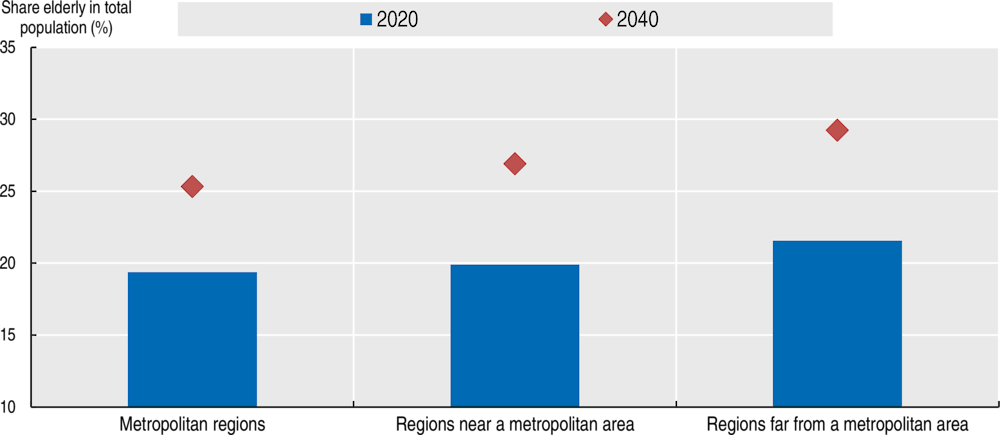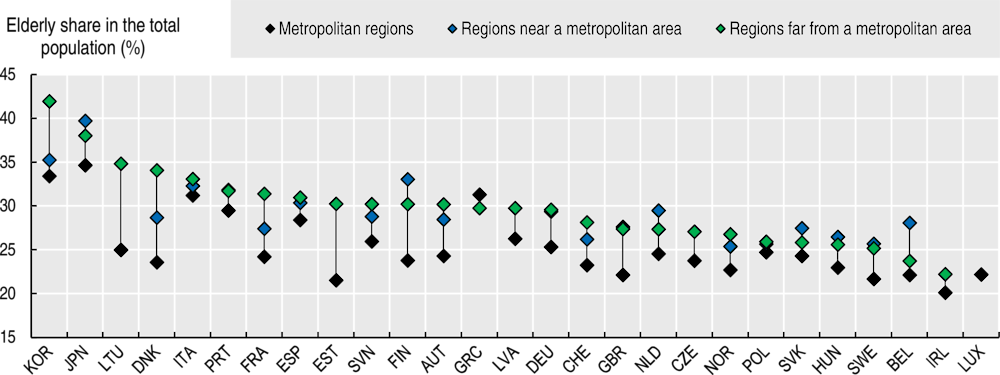Populations are expected to continue ageing, especially in non-metropolitan areas.
The population has been stagnating or declining in many OECD countries while ageing at the same time, which presents many challenges and opportunities. Older individuals typically receive public pensions and use public services such as healthcare more intensively than younger people, which can entail greater financial burdens on the working-age population and future generations. Although ageing will be present in all types of regions in the next two decades, some places will be more concerned than others.
Non-metropolitan regions will experience population ageing the most. Across the OECD, elderly dependency rates remain significantly lower in metropolitan regions compared to other regions (Figure 3.7). As the population ages, the elderly share of the population (i.e. those above 65 years old) will increase in all 3 types of regions but the increase will be largest in regions far from a metropolitan region (Figure 3.7). While the share of the elderly is expected to increase by 8 percentage points, reaching 29% in these areas, it is expected to increase by 6 pp to 25% in metropolitan regions, and by 7 pp to 27% in regions near a metropolitan region.
These expected ageing trends are common to almost all OECD countries (Figure 3.8). In most countries, dependency rates will remain significantly lower in metropolitan regions compared to other regions (Figure 3.8). This is particularly the case in countries where all non-metropolitan regions have relatively high elderly dependency rates, such as Japan, Korea and Lithuania. In these countries, all non‑metropolitan regions have elderly dependency rates above 35% (reaching 42% in Korea). Elderly dependency rates in metropolitan regions remain below 31% in all OECD countries, with the exception of Japan and Korea where the rates are 35% and 33% respectively.


